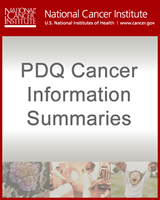From: Childhood Acute Myeloid Leukemia Treatment (PDQ®)

PDQ Cancer Information Summaries [Internet].
Bethesda (MD): National Cancer Institute (US); 2002-.
NCBI Bookshelf. A service of the National Library of Medicine, National Institutes of Health.
| Diagnostic Category | Approximate Prevalence in Pediatric AML |
|---|---|
| AML with t(8;21)(q22;q22); RUNX1::RUNX1T1 | 13%–14% |
| AML with inv(16)(p13.1q22) or t(16;16)(p13.1;q22); CBFB::MYH11 | 4%–9% |
| APL with t(15;17)(q24.1;q21.2); PML::RARA | 6%–11% |
| AML with KMT2A rearrangement | 25% |
| AML with t(6;9)(p23;q34.1); DEK::NUP214 | 1.7% |
| AML with inv(3)(q21q26)/t(3;3)(q21;q26); GATA2, RPN1::MECOM | <1% |
| AML with ETV6 fusion | 0.8% |
| AML with t(8;16)(p11.2;p13.3); KAT6A::CREBBP | 0.5% |
| AML with t(1;22)(p13.3;q13.1); RBM15::MRTFA (MKL1) | 0.8% |
| AML with CBFA2T3::GLIS2 (inv(16)(p13q24))b | 3% |
| AML with NUP98 fusionb | 10% |
| AML with t(16;21)(p11;q22); FUS::ERG | 0.3%–0.5% |
| AML with NPM1 variant | 8% |
| AML with variants in the bZIP domain of CEBPA | 5% |
aAdapted from Pfister et al.[14]
bCryptic chromosomal translocation.
From: Childhood Acute Myeloid Leukemia Treatment (PDQ®)

NCBI Bookshelf. A service of the National Library of Medicine, National Institutes of Health.